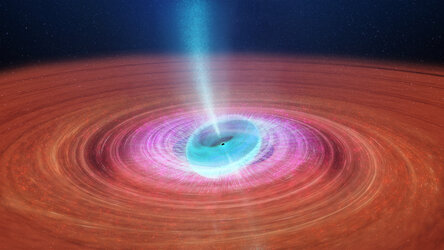Accept all cookies Accept only essential cookies See our Cookie Notice

About ESA
The European Space Agency (ESA) is Europe’s gateway to space. Its mission is to shape the development of Europe’s space capability and ensure that investment in space continues to deliver benefits to the citizens of Europe and the world.
Highlights
ESA - United space in Europe
This is ESA ESA facts Member States & Cooperating States Funding Director General Top management For Member State Delegations European vision European Space Policy ESA & EU Space Councils Responsibility & Sustainability Annual Report Calendar of meetings Corporate newsEstablishments & sites
ESA Headquarters ESA ESTEC ESA ESOC ESA ESRIN ESA EAC ESA ESAC Europe's Spaceport ESA ESEC ESA ECSAT Brussels Office Washington OfficeWorking with ESA
Business with ESA ESA Commercialisation Gateway Law at ESA Careers Cyber resilience at ESA IT at ESA Newsroom Partnerships Merchandising Licence Education Open Space Innovation Platform Integrity and Reporting Administrative Tribunal Health and SafetyMore about ESA
History ESA Historical Archives Exhibitions Publications Art & Culture ESA Merchandise Kids Diversity ESA Brand Centre ESA ChampionsLatest
Space in Member States
Find out more about space activities in our 23 Member States, and understand how ESA works together with their national agencies, institutions and organisations.
Science & Exploration
Exploring our Solar System and unlocking the secrets of the Universe
Go to topicAstronauts
Missions
Juice Euclid Webb Solar Orbiter BepiColombo Gaia ExoMars Cheops Exoplanet missions More missionsActivities
International Space Station Orion service module Gateway Concordia Caves & Pangaea BenefitsLatest
Space Safety
Protecting life and infrastructure on Earth and in orbit
Go to topicAsteroids
Asteroids and Planetary Defence Asteroid danger explained Flyeye telescope: asteroid detection Hera mission: asteroid deflection Near-Earth Object Coordination CentreSpace junk
About space debris Space debris by the numbers Space Environment Report In space refuelling, refurbishing and removingSafety from space
Clean Space ecodesign Zero Debris Technologies Space for Earth Supporting Sustainable DevelopmentLatest
Applications
Using space to benefit citizens and meet future challenges on Earth
Go to topicObserving the Earth
Observing the Earth Future EO Copernicus Meteorology Space for our climate Satellite missionsCommercialisation
ESA Commercialisation Gateway Open Space Innovation Platform Business Incubation ESA Space SolutionsLatest
Enabling & Support
Making space accessible and developing the technologies for the future
Go to topicBuilding missions
Space Engineering and Technology Test centre Laboratories Concurrent Design Facility Preparing for the future Shaping the Future Discovery and Preparation Advanced Concepts TeamSpace transportation
Space Transportation Ariane Vega Space Rider Future space transportation Boost! Europe's Spaceport Launches from Europe's Spaceport from 2012
Integral light curve
Thank you for liking
You have already liked this page, you can only like it once!
This graph shows variation in the X-ray luminosity of the black-hole binary system V404 Cygni, as observed with the IBIS/ISGRI instrument on ESA's Integral gamma-ray observatory at energies between 20 and 40 keV. This system, comprising a black hole and a star orbiting one another, is located in our Milky Way galaxy, almost 8000 light-years away in the constellation Cygnus, the Swan.
On 15 June 2015, V404 Cygni started showing signs of extraordinary activity, something that had not happened since 1989. The renewed activity is likely caused by material slowly piling up in the disc, until eventually reaching a tipping point that dramatically changes the black hole's feeding routine for a short period.
Integral has been observing V404 Cygni continuously since 17 June 2015 at 21:29 UTC, except for some short periods when it was not possible for operational reasons. One of these periods, visible at the centre of this graph, corresponds to the satellite passing the closest point to Earth in its orbit, or perigee.
The data show repeated bright flashes of light on time scales shorter than an hour, something rarely seen in other black hole systems. On these occasions, V404 Cygni becomes the brightest object in the X-ray sky, up to fifty times brighter than the Crab Nebula, which is normally one of the brightest sources in the high-energy sky. The luminosity of the Crab Nebula is indicated in the graph for reference.
Acknowledgments: Carlo Ferrigno, Integral Science Data Centre, Geneva, Switzerland/Jerome Rodriguez, Cea-Saclay, France/Marion Cadolle Bel, Max-Planck Computing and Data Facility, Garching Germany
-
CREDIT
ESA/Integral/IBIS/ISDC -
LICENCE
ESA Standard Licence

Integral image before and after the outburst

A 'spitting' black hole

Tilted black hole accretion disc

Black hole accreting material from its companion star















 Germany
Germany
 Austria
Austria
 Belgium
Belgium
 Denmark
Denmark
 Spain
Spain
 Estonia
Estonia
 Finland
Finland
 France
France
 Greece
Greece
 Hungary
Hungary
 Ireland
Ireland
 Italy
Italy
 Luxembourg
Luxembourg
 Norway
Norway
 The Netherlands
The Netherlands
 Poland
Poland
 Portugal
Portugal
 Czechia
Czechia
 Romania
Romania
 United Kingdom
United Kingdom
 Slovenia
Slovenia
 Sweden
Sweden
 Switzerland
Switzerland
























